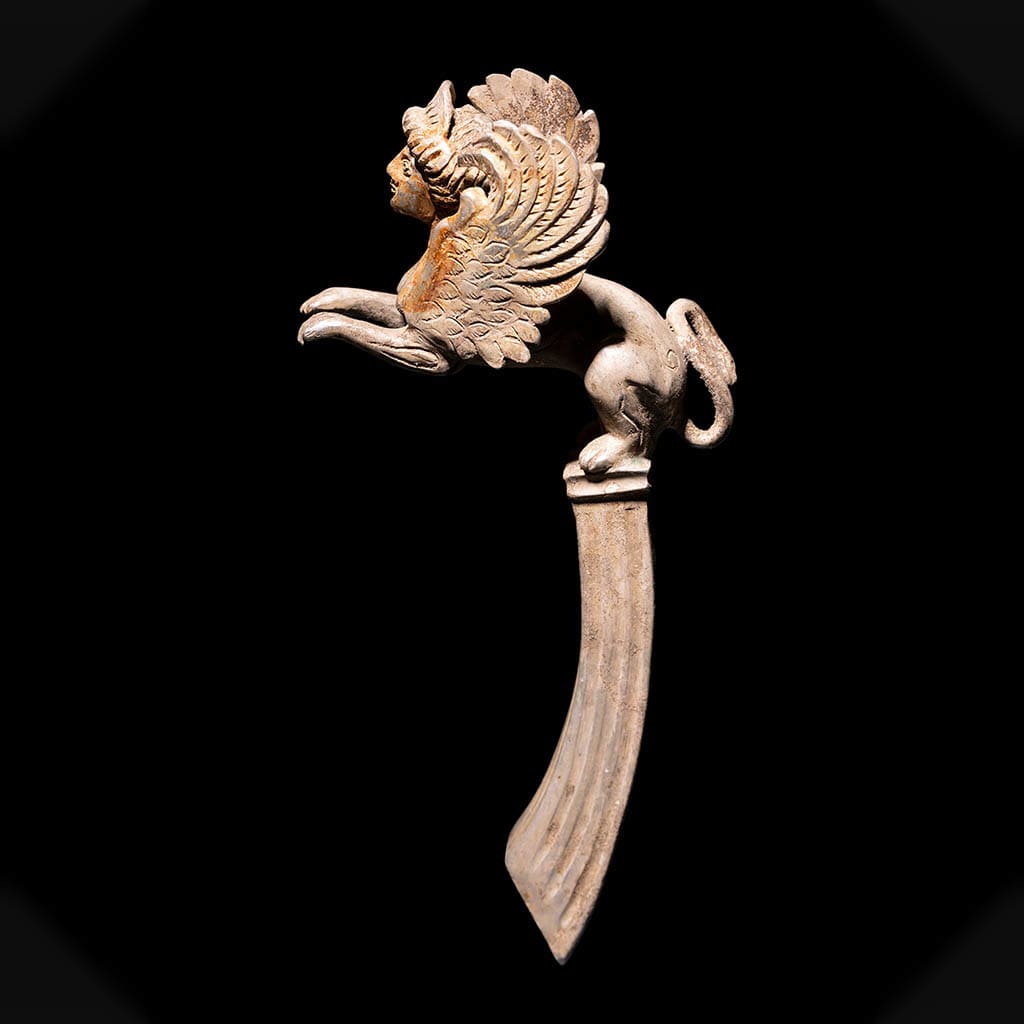A Pair of Silver Sphinx Handles, Greek, circa 5th – 4th century B.C.E.
Further images
Provenance
The Private Collection of the Baidun FamilyMahmoud Baidun (1920-1980) founded what would become Khader M Badiun and Sons Galleries in Jerusalem, Isreal. As a young boy, Mahmoud would accompany archeologists, biblical scholars, and visiting delegations on excavation sites all over Jerusalem and other sites within the country. Earning the trust of scholars and archeologists alike, Mahmoud became an indispensable presence and guide to other visiting scholars. When Mr. Baidun entered the antiquities trade, he would be granted trade license under the British Mandate and from the Hashemite Kingdom. When Israel authorized the trade of antiquities, Mahmoud was issued one of the first antiquities licenses issued in the country. He would later forge close relationships with other merchants; slowly building a massive private collection that would go on to sell to political leaders, international museums, and private collectors globally.
Literature
– BILLOT, M.F. “Le Sphinx du Louvre CA 637”, Bulletin de Correspondence Hellénique. 1977.
– MARCONI, C. Temple Decoration and Cultural Identity in the Archaic Greek World. Getty Foundation. 2007.
– RENGER, A.B. Oedipus and the Sphinx: The Threshold Myth from Sophocles through Freud to Cocteau. UCP. 2013.
Two handles from a bowl, pot or goblet. The square section is hollow and convex in shape to make holding the vessel easier. Each handle terminates in a sphinx standing on its back legs, with its front paws outstretched. These would be the point where the handles were attached to the upper area of the vessel.
The sphinxes are identical apart from the fact that one head looks to the left and the other to the right, although not quite to the same degree. They are depicted according to the Greek social conception of this mythological creature. Each has the bust of a woman, the body and tail of a lion, great bird wings and a female human head. Each head is depicted wearing a diadem and with the hair swept up and held at the back of the head in a bun. The precision and detail of the working of the faces and wings is notable, giving a sense of movement and realism to the pair. One can appreciate a clear attempt to differentiate between the feathers of the wings: those inserted into the body itself are small and short, rather like scales, while those at the extreme end of the wings are long and narrow, to help the creature take flight.
According to ancient literary sources, the sphinx was a monster with the face and bust of a woman, the claws of a lion, the body of a dog, the tail of a snake and wings of a bird. This demon of divine origin, whose presence excited uncertainty and terror in humans, was also characterized by its pallid appearance, fiery look and venomous mouth. It’s possible that this hybrid had its origin in Egyptian iconography, where it was represented with a feline body and human face, possibly connected to the divine power of the pharaoh.
The sculptural prototype of Greek sphinxes appears around the 7th century BCE in terracotta and was usually found decorating large receptacles. A century later they appeared in marble crowning seated ex-votos on a column. The monstrous, aggressive nature of the hybrid was channelled into funerary art, serving as an apotropaic symbol to keep away malevolent forces. It was usual, therefore, to find this iconography in metopes and hollow acroteria in Greek necropoleis of the 6th century BCE, usually with the animal in profile and turning its head toward the public in an attitude of defiance.













